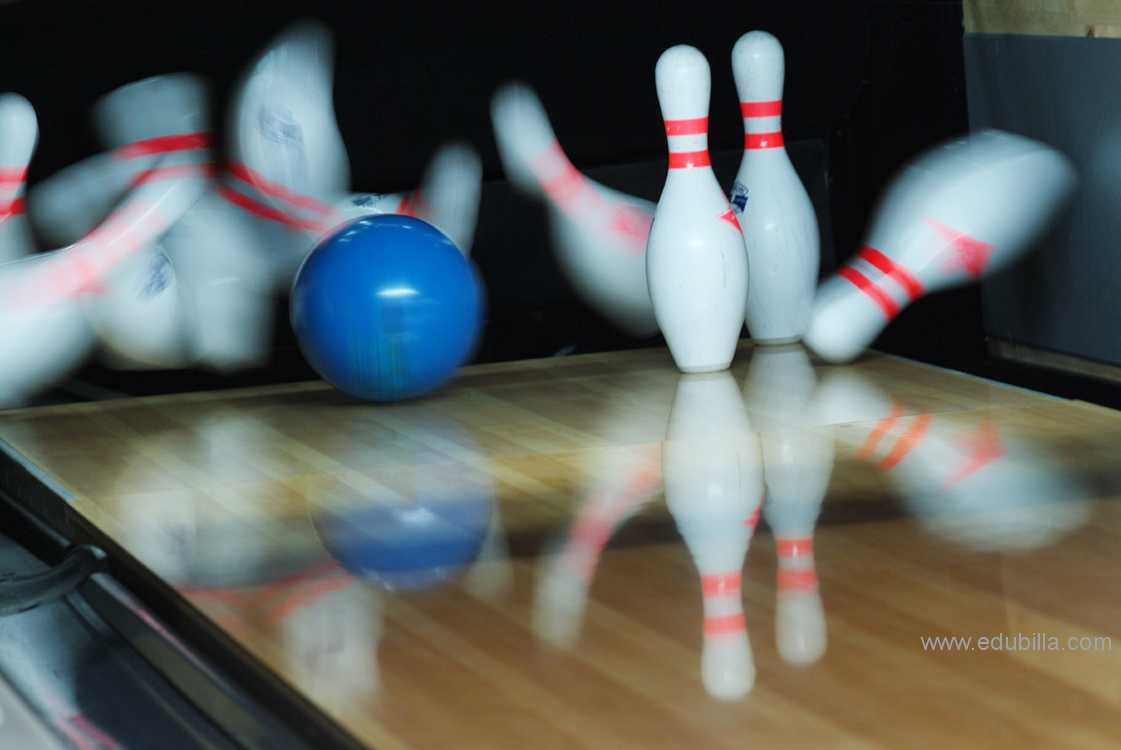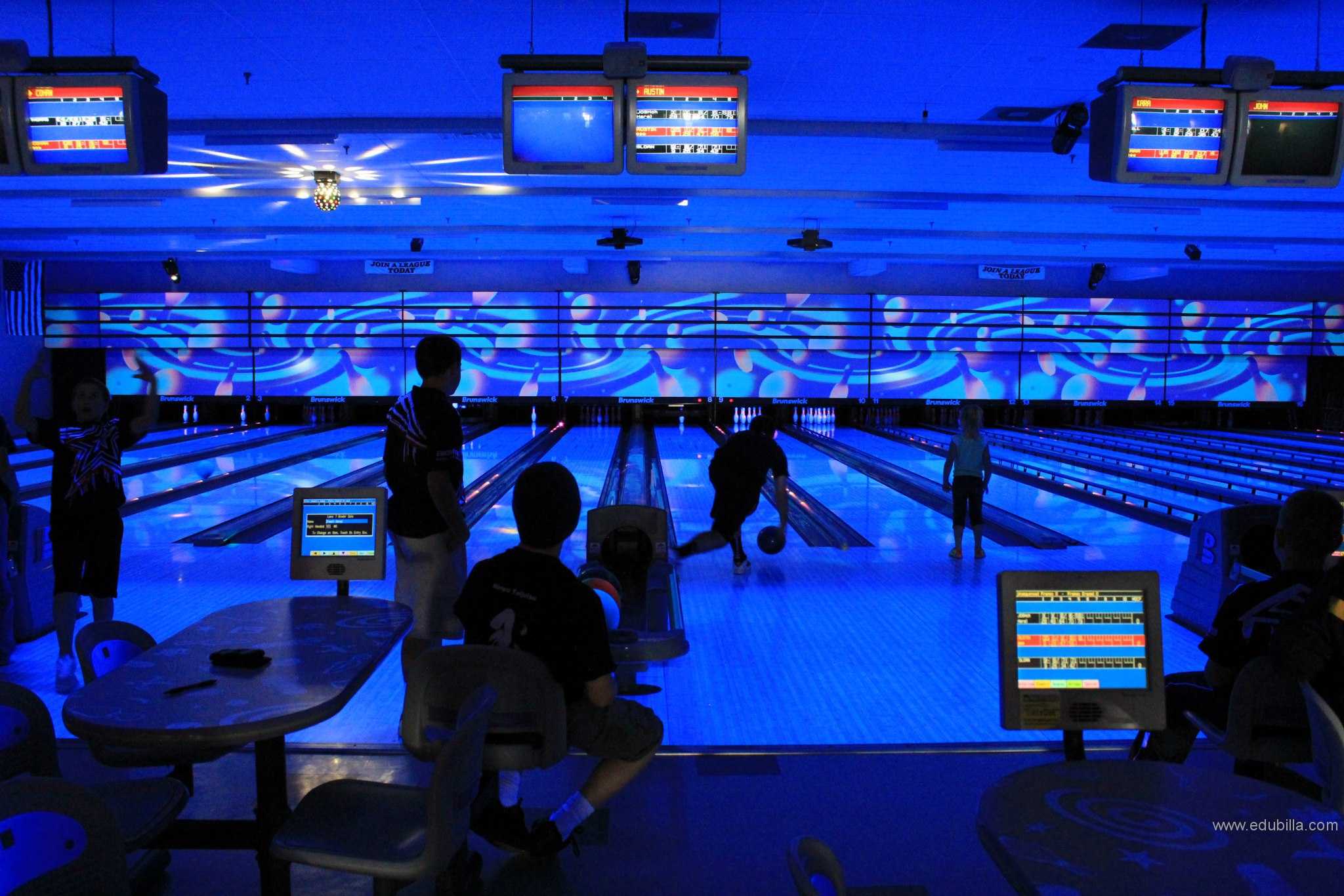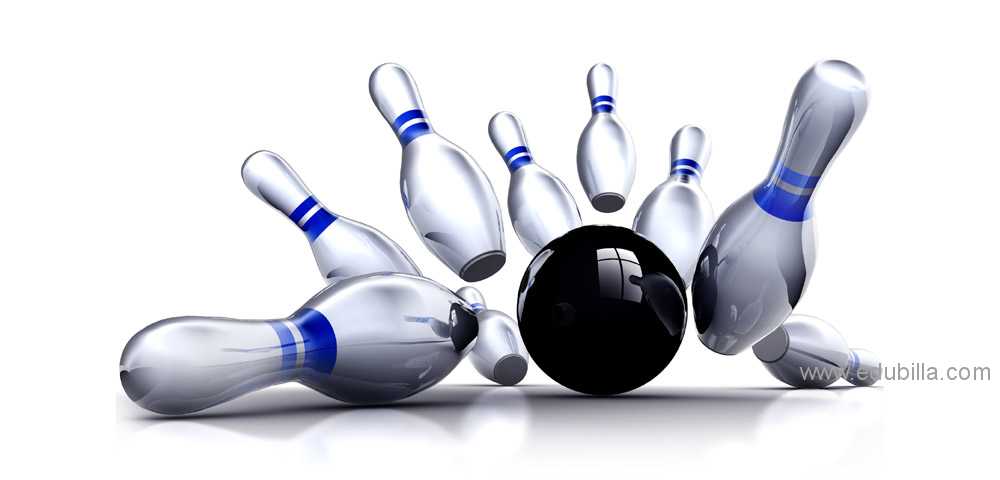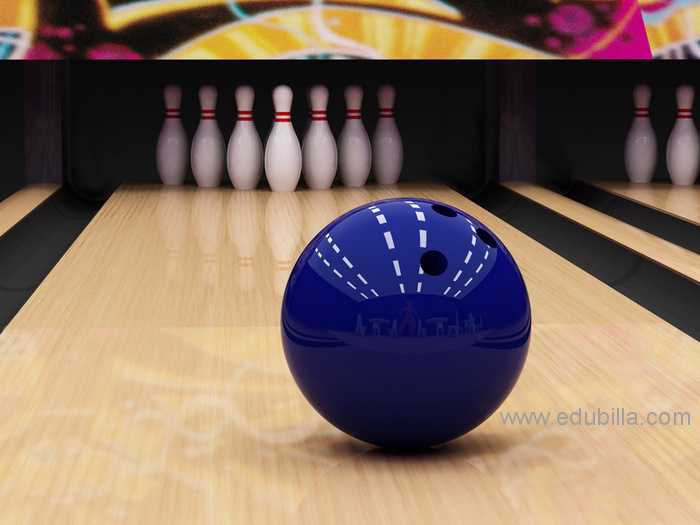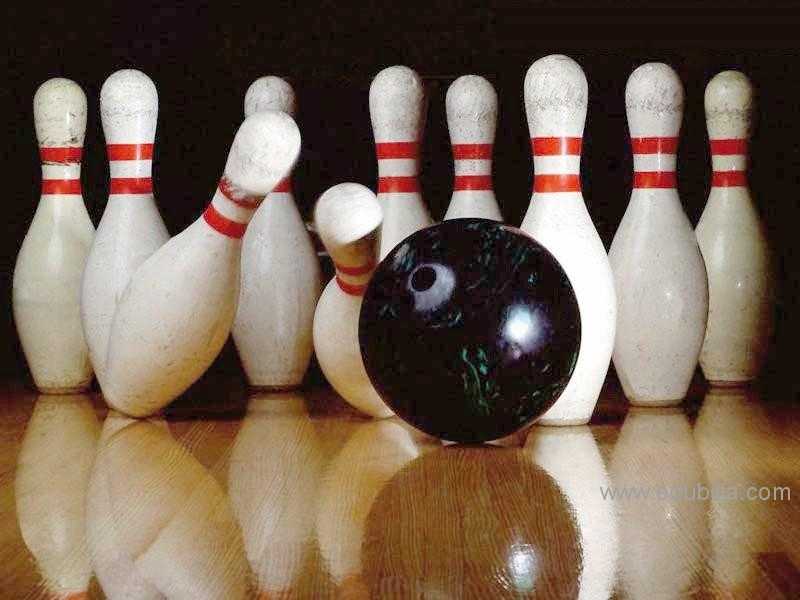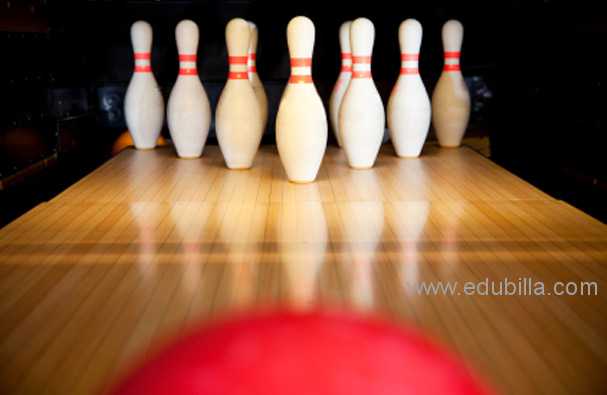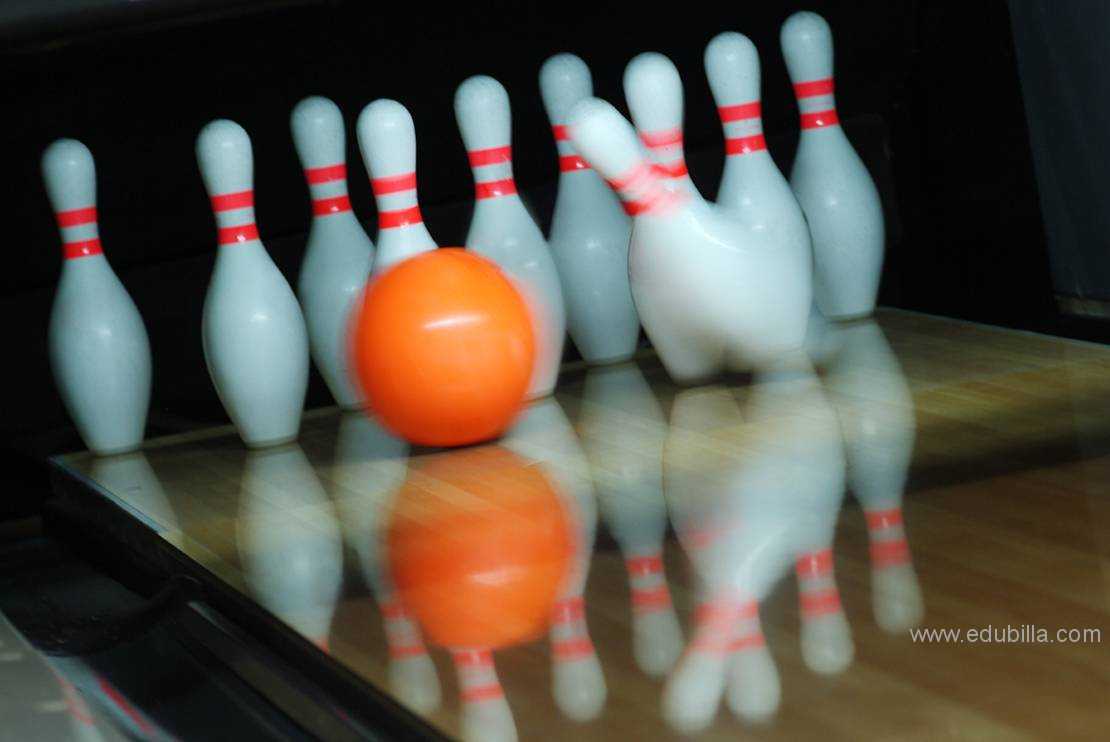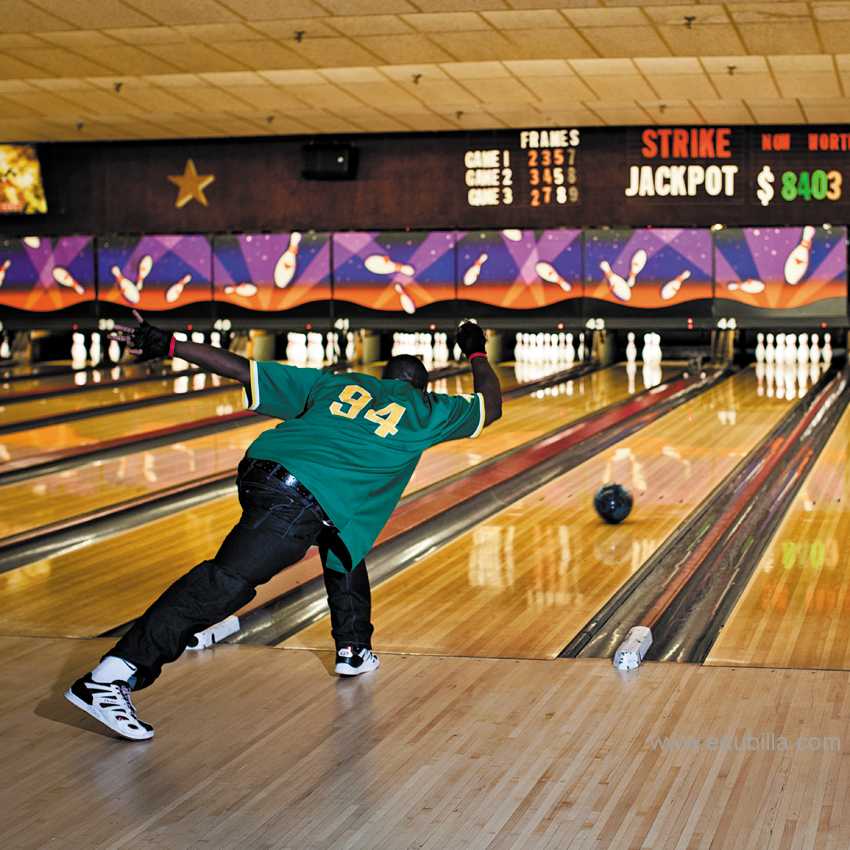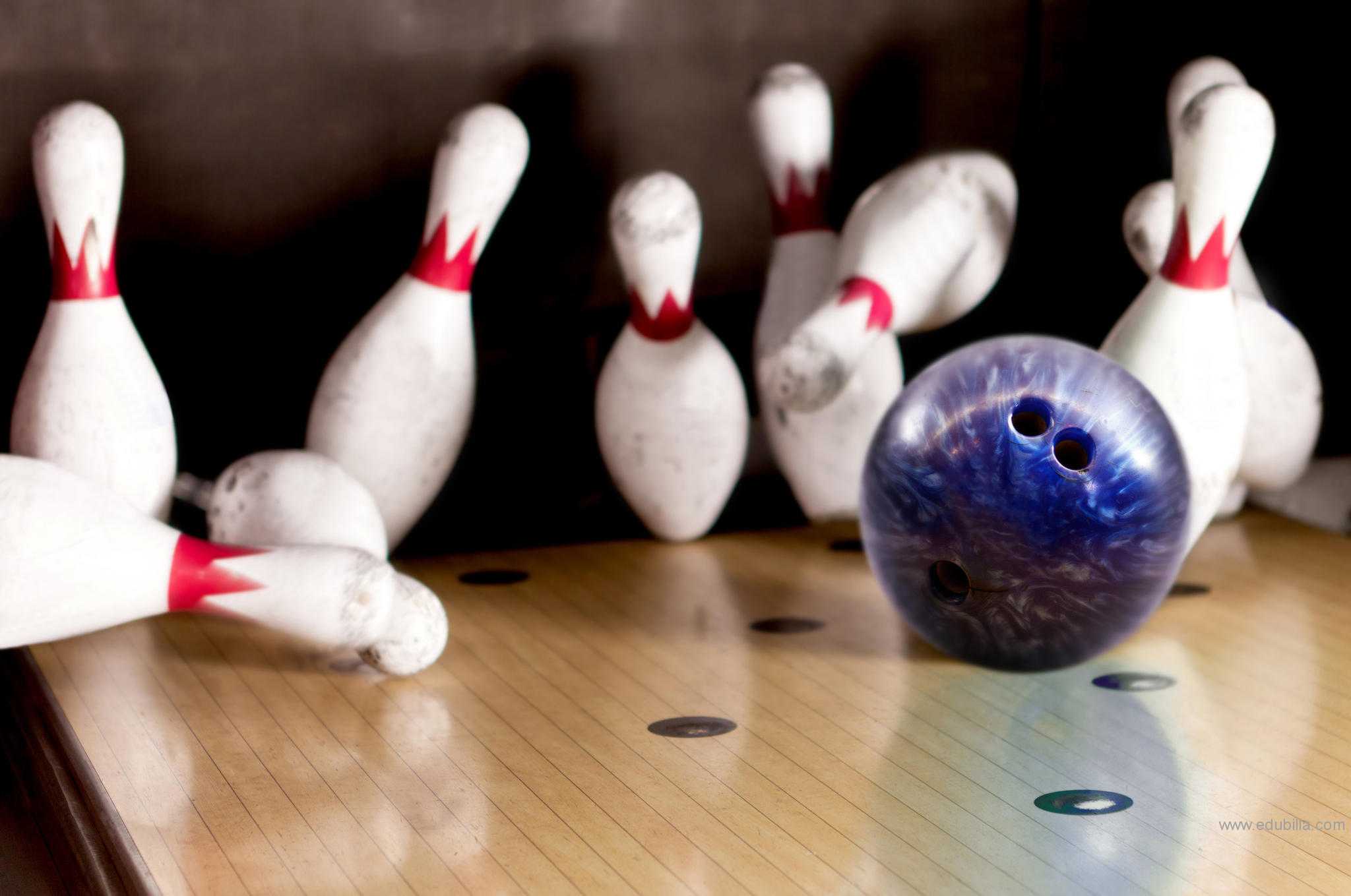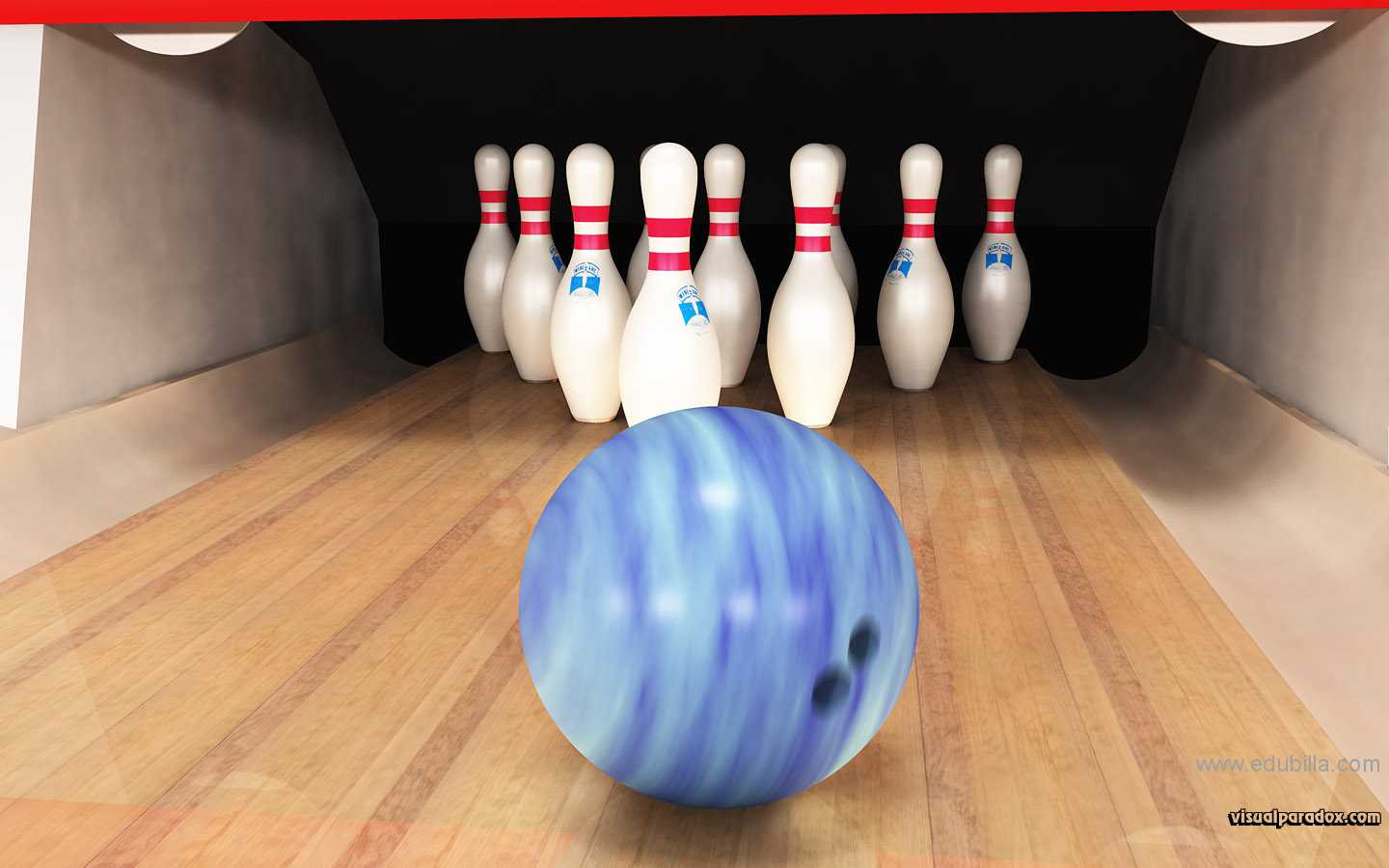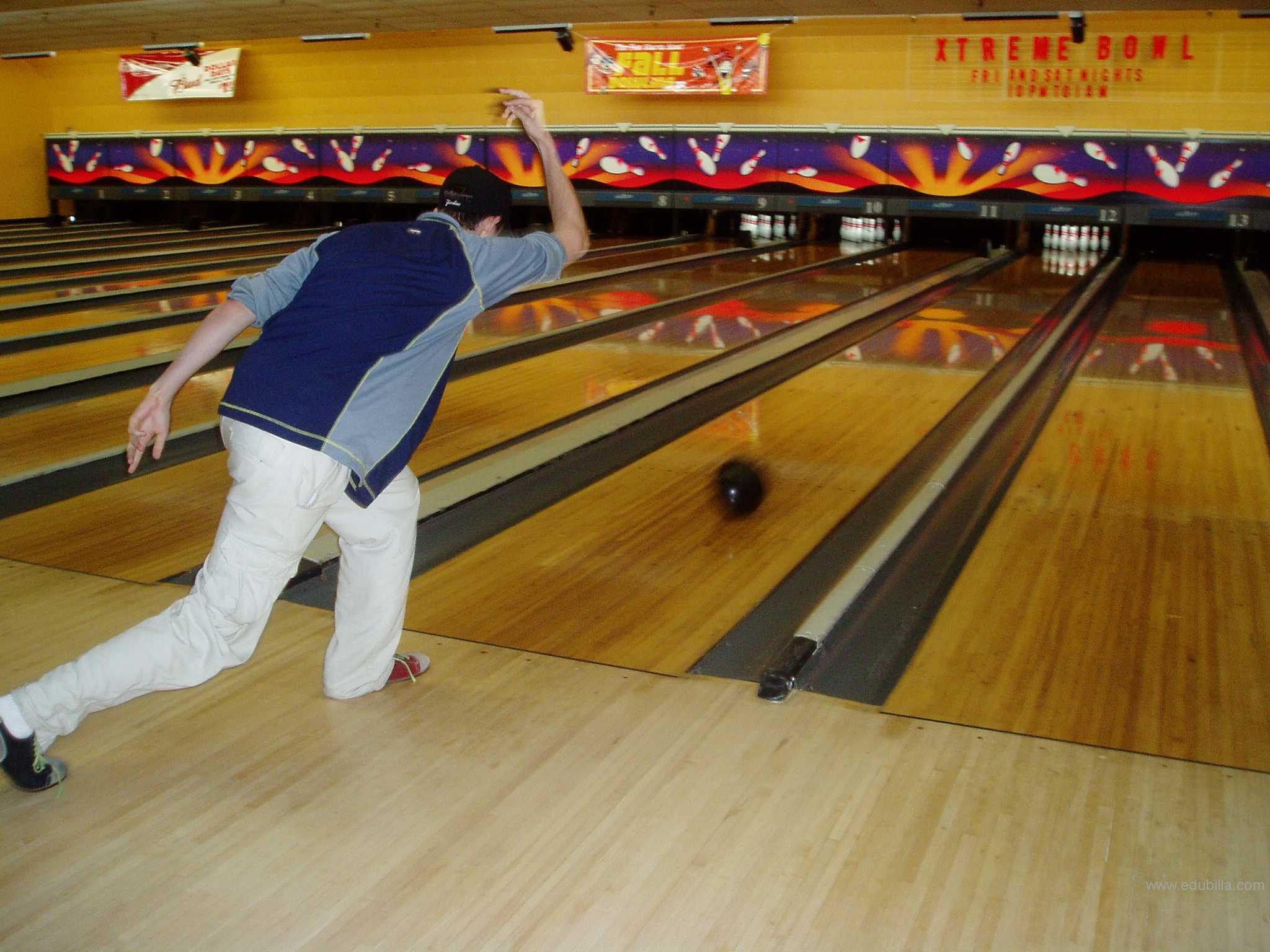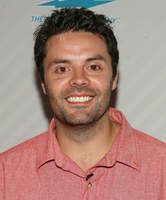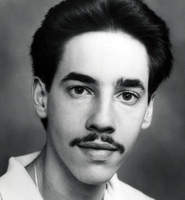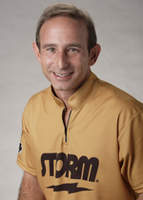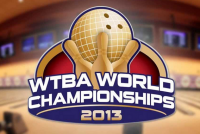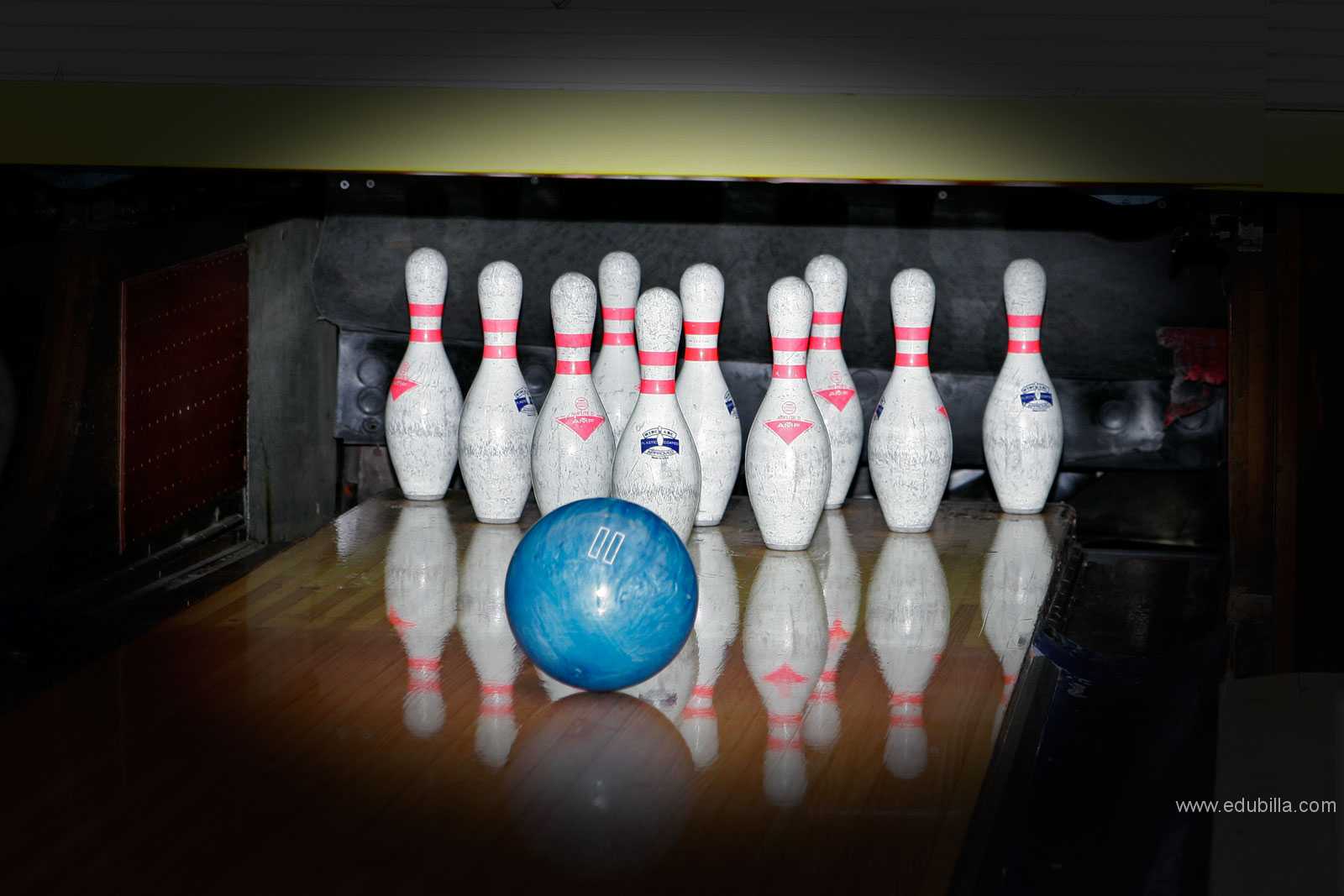
Overview Of Ten-pin Bowling
Ten-pin bowling is a sport in which a player, or "bowler" rolls a bowling ball down a wooden or synthetic (polyurethane) lane with the objective of scoring points by knocking down as many pins as possible. In Canada, the United States, United Kingdom and Australia, the game is commonly referred to as just "Bowling". In New England, "bowling" is usually referred to as "regular bowling", "ten-pin bowling" or "big-ball bowling", because of the "small-ball" used in five-pin bowling, candlepin and sometimes duckpin varieties, which each use much smaller and lighter bowling balls as compared to ten-pin bowling, without the need for finger holes in them.
Play:
The bowler is allowed 10 frames in which to knock down pins, with frames one (1) through nine (9) being composed of up to two rolls. The tenth frame may be composed of up to three rolls: the bonus roll(s) following a strike or spare in the tenth (sometimes referred to as the eleventh and twelfth frames) are fill ball(s) used only to calculate the score of the mark rolled in the tenth.
Bowling has a unique scoring system which keeps track not only of the current pinfall in a frame, but also strikes and spares which allow for the value of subsequent pinfall. Effectively, there are three kinds of marks given in a score; a strike (all ten down in the first ball), a spare (all ten down by the second ball), and an open (one or more missed pins still standing after the second ball). A strike earns ten points plus the points for the next two balls thrown. (For example, if a player got a strike then followed with a 7 then 2, their value for the strike frame would be 10+7+2, or 19.) A spare earns ten points plus the points for the next ball thrown. (Again, if a player gets a spare then follows it with 7 pins down on the first ball of the next frame, their value for the spare frame would be 10+7, or 17.) Open frames count the value of the pinfall in that frame only. (Example: if a player knocks down 5 on their first ball and 3 on their second, the open frame would be worth 8 points.) The maximum score in tenpin bowling is 300. This consists of getting 12 strikes in a row in one game (one strike each in frames 1–9, and all three possible strikes in the tenth frame), and is also known as a perfect game.
Game Rules
The regulations listed here are generally based around regulations set by the United States Bowling Congress — based on the original rules first codified by a USBC predecessor, the American Bowling Congress in 1895 — and the British Tenpin Bowling Association.These rules are followed by all certified leagues and events, such as tournaments.
This information is clarified by the World Tenpin Bowling Association in its "Statutes and Playing Rules".
Playing area:
The sport of ten-pin bowling is performed on a straight, narrow surface known as a lane. This bowling lane is 60 feet (18.29 m) from the foul line to the head pin (1-pin). About 15 feet (4.57 m) from the foul line are a set of guide arrows. The lane is 41.5 inches (1.05 m) wide and normally consists of 39 wooden boards (commonly rock maple in the "heads", which is the first 15 feet of lane, and in the pin deck, which begins about 2 feet in front of the head pin; the middle of lane is a softer wood) or a synthetic material. The bowling lane has two sets of approach dots; from the foul line back to the first set of approach dots is about 12 feet (3.66 m) and to the second set of approach dots is about 15 feet (4.57 m) (an additional 3 feet (0.91 m)). Although this figure varies, the lane is protected by about 18 millilitres (0.63 imp fl oz; 0.61 US fl oz) of oil (also known as "the shot"). PBA events use about 30 millilitres (1.06 imp fl oz; 1.01 US fl oz) of oil, and PWBA events use 25 millilitres (0.88 imp fl oz; 0.85 US fl oz). The oil starts from about 4 inches from the foul line and is applied for about 38 feet (11.58 m) down the lane from that point.
Pins:
Position of the ten pins from above
USBC rules specify that a pin must be 15 inches (38 cm) tall and about 4.7 inches (12 cm) wide at its widest point, where a rolling ball would make contact. There are additional measurements which delineate the shape. The weight of a single pin must be at least 3 pounds 6 ounces and no more than 3 pounds 10 ounces (1.53–1.64 kg). Within a set of ten pins, the individual weights may vary by no more than 4 ounces (113.4 g), if made from wood or plastic coated, or just 2 ounces (56.7 g) if synthetic. The top of the pin shall have a uniform arc with a radius of 1.273 ± 1/32 inch (32.33 ± 0.79 mm).
The USBC also has regulations governing the weight distribution of the pin from top-to-bottom. Pins are allowed one or two "voids" (holes) in the belly area (which can be viewed if the pin is cut in half from top-to-bottom). The voids are needed to balance the narrower top half of the pin with the wider bottom half. Without them, the pins would be too bottom-heavy to fall properly when struck. In addition, a standard regulation pin may lean no more than 10 degrees off center without falling.
The pins must show the name and mark of the maker, either "USBC Approved" or "BTBA Approved" and appear uniform.
The head pin or 1 pin stands on board 20 of the lane.
Bowling ball:
Main article: Bowling ball
The diameter of the ball is 8.5 inches (21.59 cm) and the circumference of the ball must not be more than 27 inches (0.69 m),and the ball cannot weigh more than 16 pounds (7.26 kg).Generally, the lightest ball available for use is 6 pounds (2.72 kg). The ball must have a smooth surface over its entire circumference except for holes or indentations used for gripping the ball, holes or indentations made to bring the ball back into compliance with weight-distribution regulations, identification letters and numbers, and general wear from normal use.
For much of the history of bowling, bowling balls were made using a three piece construction method. Starting in the mid-1990s, however, most manufacturers switched to a two-piece method. In response to these innovative ball designs, the American Bowling Congress placed further restrictions on the technical characteristics of the ball such as the radius of gyration and hooking potential.
Rules of play:
A game of bowling consists of ten frames. In each frame, the bowler will have two chances to knock down as many pins as possible with his bowling ball. In games with more than one bowler, as is common, every bowler will take his frame in a predetermined order before the next frame begins. If a bowler is able to knock down all ten pins with the first ball, he is awarded a strike. If the bowler is able to knock down all 10 pins with the two balls of a frame, it is known as a spare. Bonus points are awarded for both of these, depending on what is scored in the next two balls (for a strike) or one ball (for a spare). If the bowler knocks down all 10 pins in the tenth frame, the bowler is allowed to throw three balls for that frame. This allows for a potential of 12 strikes in a single game, and a maximum score of 300 points, a perfect game. The player with the most points at the end of ten frames wins. Although if time runs out before the end of ten frames bowling stops, and the person with the most points wins the game.
Scoring:
In general, one point is scored for each pin that is knocked over. So if a player bowls over three pins with the first shot, then six with the second, the player would receive a total of nine points for that frame. If a player knocks down nine pins with the first shot, but misses with the second, the player would also score nine. When a player fails to knock down all ten pins after their second ball it is known as an open frame.
Detailed Ten-pin Bowling Can Be Downloaded From Documents
Equipments Need For Ten-pin Bowling
Pins:
Position of the ten pins from above
USBC rules specify that a pin must be 15 inches (38 cm) tall and about 4.7 inches (12 cm) wide at its widest point, where a rolling ball would make contact. There are additional measurements which delineate the shape. The weight of a single pin must be at least 3 pounds 6 ounces and no more than 3 pounds 10 ounces (1.53–1.64 kg). Within a set of ten pins, the individual weights may vary by no more than 4 ounces (113.4 g), if made from wood or plastic coated, or just 2 ounces (56.7 g) if synthetic. The top of the pin shall have a uniform arc with a radius of 1.273 ± 1/32 inch (32.33 ± 0.79 mm).
Bowling ball:
The diameter of the ball is 8.5 inches (21.59 cm) and the circumference of the ball must not be more than 27 inches (0.69 m),and the ball cannot weigh more than 16 pounds (7.26 kg).Generally, the lightest ball available for use is 6 pounds (2.72 kg). The ball must have a smooth surface over its entire circumference except for holes or indentations used for gripping the ball, holes or indentations made to bring the ball back into compliance with weight-distribution regulations, identification letters and numbers, and general wear from normal use.
For much of the history of bowling, bowling balls were made using a three piece construction method. Starting in the mid-1990s, however, most manufacturers switched to a two-piece method. In response to these innovative ball designs, the American Bowling Congress placed further restrictions on the technical characteristics of the ball such as the radius of gyration and hooking potential.
History Of Ten-pin Bowling
In 1930 the British anthropologist Sir Flinders Petrie and his team of archaeologists discovered all sorts of primitive bowling balls, bowling pins and other materials in the grave of an Egyptian boy from 3200 BC. It appears that the ancient Egyptians played a primitive form of bowling and that bowling is more than 5200 years old.
The German historicist William Pehle claimed that in 200 BC an ancient form of bowling was played in his home country. In Germany of that time a form of bowling was played during festivals, where stones were thrown at nine wooden sticks, which were called 'kegles'. Due to this fact bowlers in Germany are also known as 'keglers'.
In England bowling first appeared around 1100. Hard evidence of bowling was found in the year 1366. In this year King Edward III forbid his troops to play bowling, so that they would spend more time on the practice of arching. During the regime of King Henry VIII bowling became a popular sport amongst the British population.
Australia's Tenpin Bowling History:
Australian tenpin bowling began at the Washington Bowling Saloon in Ballarat, Victoria, in 1885, the records in Sydney's Mitchell Library show.
The game spread throughout Australia with manually operated centres in many areas. With the advent of automatic pinsetting machinery the popularity of the game exploded. The first fully automatic centre opened in Hurstville, Sydney in 1960.
Bowling has survived and grown into the world's second most played sport, with over 200 million participants annually.
Commonwealth Games:
Tenpin bowling then made its first appearance in the 1998 Commonwealth Games, held in Malaysia. 18 Commonwealth countries contested tenpin bowling in a state of the art Centre, Pyramid Bowl, in Kuala Lumpur.
Medals were awarded in five events - Men's and Women's Doubles, Mixed Doubles and Men's and Women's Singles.
Australia's team of Frank Ryan, Michael Muir, Cara Honeychurch and Maxine Nable performed spectacularly, achieving the highest tenpin bowling medal tally in the Games with 3 Gold, 1 Silver and 1 Bronze.
Tenpin Bowling also featured at the 2004 Commonwealth Youth Games in Bendigo, Victoria. Australia’s Matthew Kanafa won two gold medals in the Boys Masters and the Boys Doubles with partner Stephen Reynolds. Bianca Flanagan and Louise Ingoe took Bronze in the Girls Doubles with Bianca winning another Bronze in the Mixed Doubles with Stephen Reynolds.
Olympic Games:
Although bowling is yet to be included as a full medal sport at the Olympic Games, it was a demonstration sport at the 1988 Seoul Olympics. Then in 1992 and 1996, a modern bowling facility was installed in the Athletes' Village at Barcelona and Atlanta where champion bowlers conducted exhibitions, competed, and offered instructional sessions for the benefit of Olympic athletes.
Origin Of Ten-pin Bowling
In 1930, British anthropologist Sir Flinders Petrie, along with a team of archaeologists, discovered various primitive bowling balls, bowling pins and other materials in the grave of a protodynastic Egyptian boy dating to 3200 B.C., very shortly before the reign of Narmer, one of the very first Egyptian pharaohs. Their discovery represents the earliest known historical trace of bowling.Others claim that bowling originated in Germany around 300 A.D.,as part of a religious ritual in which people would roll stones at clubs (or "kegels") to absolve themselves of sins
First Written Reference:
A site in Southampton, England claims to be the oldest lawn bowling site still in operation, with records showing the game has been played on the green there since 1299.The first written reference to bowling dates to 1366, when King Edward III of England banned his troops from playing the game so that they would not be distracted from their archery practice.
Skittles (sport):
Ninepin bowling was introduced to the United States from Europe during the colonial era, similar to the game of skittles.Skittles is an old European lawn game, a variety of bowling from which ten-pin bowling, duckpin bowling, candlepin bowling (in the United States), and five-pin bowling (in Canada) are descended. In regions of the United Kingdom and Ireland the game remains a popular indoor pub game. A continental version is popular in Germany, Austria and Switzerland.It became very popular and was called "Bowl on the Green".
The Dutch, English, and Germans all brought their own versions of the game to the New World, where it enjoyed continued popularity, although not without some controversy. In 1841 a law in Connecticut banned ninepin bowling lanes due to associated gambling and crime, and people were said to circumvent the letter of the prohibition by adding an extra pin, resulting in the game of ten-pin bowling.
Governing Bodies
Governing bodies:
In ten-pin bowling there are two major world organizations which govern the sport and have predominant influence over its rules. These two central bodies are based in the United Kingdom and the United States, but their influence and ascendant ruling are highly respected globally and are projected worldwide. Additionally, there is the World Tenpin Bowling Association (WTBA), a part of the FIQ organization, who governs the sport of tenpin bowling throughout the world of which is divided in three zones; the American Zone, Asian Zone and European Zone.
World Tenpin Bowling Association:
The World Tenpin Bowling Association of the Fédération Internationale des Quilleurs is a Ten-pin bowling organisation which independently formulates its own policies, which may not conflict with FIQ Statutes. They also promulgate and enforce playing rules and equipment specifications, conduct world championships, oversee zone championships and grant approval for other international tournaments.
The WTBA manages the World Bowling Tour.
History:
International bowling began during the 1930s under the International Bowling Federation. The attempt to unite all the bowlers in the world created Federation International de Quillers (FIQ) in 1952.
Worldwide Zones:
It is divided into the following geographical Zones:
-American Bowling Federation which consists of North and South America
-Asian Bowling Federation which consists of Asia, Australia, Western Pacific
-European Tenpin Bowling Federation which consists of Europe and Africa and is host top the European Bowling Tour (similar to that of the PBA's Tour)
To Visit WTBA Click Here
United States Bowling Congress:
The United States Bowling Congress is a sports membership organization dedicated to ten-pin bowling in the United States. It was formed in 2005 by a merger of the American Bowling Congress — the original codifier of all tenpin bowling standards, rules and regulations from 1895 onwards; the Women's International Bowling Congress — founded in 1916, as the female bowlers' counterpart to the then all-male ABC; the Young American Bowling Alliance, and USA Bowling. The USBC's headquarters are located in Arlington, Texas, after having moved from the Milwaukee suburb of Greendale, Wisconsin in November, 2008. The move enabled the USBC to combine its operations with the Bowling Proprietors' Association of America (BPAA).
History:
The first nationally recognized organization for bowling was the American Bowling Congress (ABC), founded in 1895 in New York City, which set the basic specifications for the playing rules and equipment of the ten-pin sport, used to this day. Historically, the membership of the ABC was all male, but beginning in 1993, women were permitted to join. In 1916, the Women's International Bowling Congress (WIBC) was formed by a group of 40 women, and through 2004 served as a partner organization of the ABC. The Young American Bowling Alliance (YABA) was established in 1982, after previously existing as the American Junior Bowling Congress founded in 1958, to serve youth bowlers from pre-school through collegiate level. Prior to the formation of the USBC, the national governing body for bowling was USA Bowling, which oversaw the participation of Team USA in international events. These four organizations merged to form USBC on January 1, 2005.
USBC Hall of Fame:
The USBC Hall of Fame was formed in 2005 by the merger of the ABC Hall of Fame (established 1941) and WIBC Hall of Fame (established 1953).
Through 2012, there are 396 Hall of Fame members in four categories:
-Superior Performance (262)
-Meritorious Service (114)
-Pioneer (20)
To Visit USBC Click Here
British Tenpin Bowling Association(BTBA):
The British Tenpin Bowling Association (BTBA) is the official governing body of ten-pin bowling in the United Kingdom. It is the official sanctioning body, recognised by FIQ, the sport's world governing body, for all competitions, leagues and tournaments held in the UK, and is the organisation responsible for the protection, integrity and development of the sport. It also oversees coaching for tenpin bowling at all levels, and is the official awarding body for formal coaching qualifications. The BTBA also publishes Go Tenpin, a monthly magazine to keep members up to date with the latest news in the sport.
History:
The first British tenpin bowling centre opened at Stamford Hill. The two principal American manufacturers of tenpin machinery - AMF and Brunswick - had expanded their operations to the UK when it became apparent that they had virtually saturated their home market in the USA at the end of the 1950s. The American Bowling Congress (ABC) took an interest in this expansion and helped British bowlers to set up their own governing body.
The BTBA was formed on 26 May 1961 The General Secretary was Maurice Glazer, at that time a professional photographer in Dalston, East London. His shop became the first official residence of the Association. One of its original roles was to provide official recognition for newcomers to the fledgling sport of tenpin bowling as it grew in popularity across the UK.
It standardised rules and playing regulations, laid down guidelines and provided an independent governing body to which reference could be made in the event of disagreement.
The rule-book was copied almost verbatim from the ABC version. The annual membership subscription was five shillings), which at the prevailing exchange rate was the Sterling equivalent of the ABC's annual subscription of US$1. With about half-a-million members the ABC found this rate to provide them with adequate funds, but it was insufficient to run the BTBA, given that only a few thousand British bowlers were members.
Authority was delegated to each of the counties under the auspices of local area representatives. Some of the area representatives soon came into conflict with the bowling centre proprietors, for example insisting on costly re-surfacing of lanes, which they argued was unnecessary. The proprietors rebelled and set up their own rival organisation, the Tenpin Bowling Proprietors Association (TBPA), in 1967. An Annual General Meeting of the BTBA saw this conflict rise to a head and most of the governing council resigned, leaving Glazer to regroup and bring back all decisions to the BTBA head office. It took several years to achieve a rapprochement with the proprietors.
To Visit BTBA Click Here
Awards Related To Ten-pin Bowling
Best Bowler ESPY Award:
The Best Bowler ESPY Award has been presented annually since 1995 to the ten-pin bowler, irrespective of gender, adjudged to be the best in a given calendar year of those contesting the sport professionally in the United States.
Between 1993 and 2004, the award voting panel comprised variously fans; sportswriters and broadcasters, sports executives, and retired sportspersons, termed collectively experts; and ESPN personalities, but balloting thereafter has been exclusively by fans over the Internet from amongst choices selected by the ESPN Select Nominating Committee.
Through the 2001 iteration of the ESPY Awards, ceremonies were conducted in February of each year to honor achievements over the previous calendar year; awards presented thereafter are conferred in June and reflect performance from the June previous.
PBA Tour:
The PBA Tour is the major professional tour for ten-pin bowling, operated by the Professional Bowlers Association. Headquartered in Seattle, Washington, 4,300 members worldwide make up the PBA.Within the membership, a small percentage of the bowlers compete on both a national and international level, forming the PBA Tour.
PBA Player of the Year Award:
The PBA Player of the Year began being officially recognized in 1963. It was awarded by The Sporting News from 1963–70, and by the PBA membership from 1971–2007. Some factors used in the voting process for a given season included major titles, total titles, Tour average ranking, points ranking, season earnings and TV finals appearances. The mid-1970s to early-1980s were dominated by Earl Anthony and Mark Roth. The two won 10 of the 11 P.O.Y. awards between 1974–84, and faced off in many memorable finals. In the 2007–08 season, a new Player of the Year system was instituted, where a points system only determines the winner. Chris Barnes became the first Player of the Year winner under this new system in 2008, edging out Walter Ray Williams Jr. by two points. The points-only system lasted just three seasons, and by the 2010–11 season, a player vote was again part of the process.
George Young Memorial High Average Award:
The George Young Memorial High Average Award is given to the bowler with the highest average for the PBA Tour season.
Steve Nagy Sportsmanship Award:
Established in 1966, the Steve Nagy Sportsmanship Award is named after the late PBA Hall of Famer and founding members of the PBA. A colorful and talented performer, Nagy made such an impact on his fellow pros that the award was established shortly after his death. Hall of Famer Johnny Guenther won the first "Nagy."
Ryan Shafer of Horseheads, N.Y., has been selected by his fellow Professional Bowlers Association members as winner of the 2012-13 Steve Nagy Sportsmanship Award, PBA Commissioner Tom Clark announced today.
PBA Hall of Fame:
The PBA Hall of Fame was founded in 1975 with eight initial inductees (Ray Bluth, Don Carter, Carmen Salvino, Harry Smith, Dick Weber, Billy Welu, Frank Esposito, Chuck Pezzano) and continues to serve as a permanent tribute to the immortals of the sport.
For PBA Hall of Fame Performance Category eligibility, a bowler must have either:
-Won a minimum of 10 PBA Tour titles.
-Won a minimum of five PBA Tour titles, including two majors, and been a PBA member for at least 20 years.
USBC Hall of Fame:
Election to the United States Bowling Congress Hall of Fame is the highest honor USBC can bestow for extraordinary contribution to the sport, on and off the lanes.
The USBC Hall of Fame was created in 2005 by merging the halls of fame of the American Bowling Congress (founded in 1941) and the Women's International Bowling Congress (founded in 1953). The USBC Hall of Fame is governed by the USBC Hall of Fame Committee.
Rookie of the Year (award):
The Rookie of the Year award is given by a number of sports leagues to the top-performing athlete in his or her first season within the league. Athletes competing for the first time in any given league are known as "rookies".
Sample Documents Of Ten-pin Bowling
-Sachin Tendulkar

